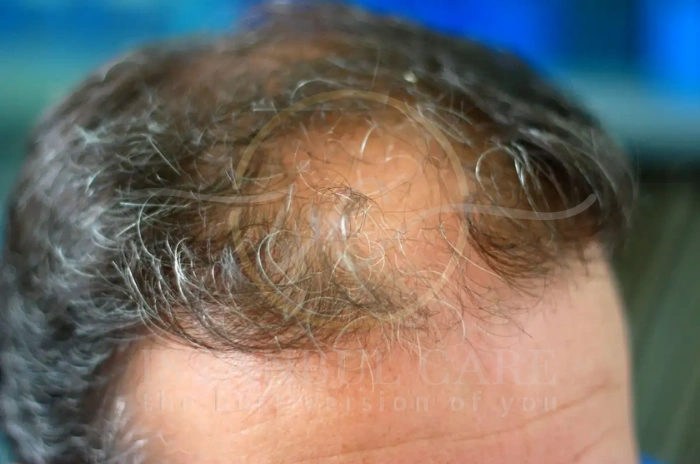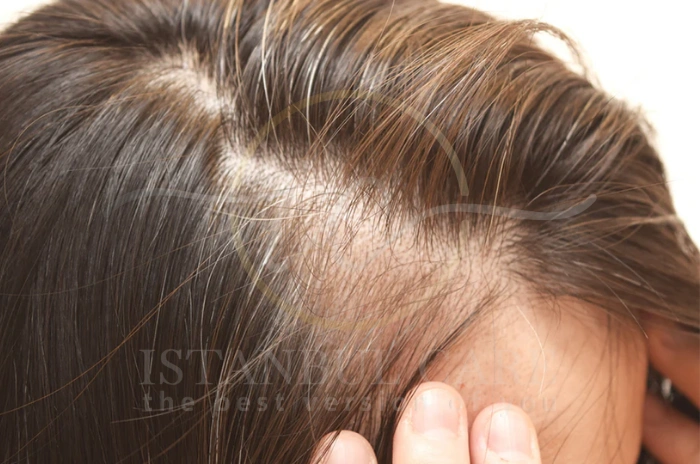The pandemic has brought numerous unexpected health challenges, and one of the most distressing yet common issues many people face is COVID hair loss. If you’ve noticed excessive hair shedding weeks or months after recovering from COVID-19, you’re not alone. This phenomenon affects millions of people worldwide and represents a significant but often overlooked aspect of post-COVID recovery.
Hair loss after COVID typically manifests as diffuse thinning rather than patchy baldness, with many individuals reporting handfuls of hair coming out during washing or brushing. Research indicates that approximately 25-30% of COVID-19 survivors experience some degree of hair loss within 2-6 months of their initial infection.

Understanding COVID Hair Loss and Its Causes
COVID hair loss occurs through multiple pathways that affect the normal hair growth cycle. The SARS-CoV-2 virus doesn’t directly attack hair follicles, but rather creates systemic conditions that disrupt the delicate balance of hair growth and shedding phases.
The primary mechanism involves the body’s inflammatory response to the virus. During COVID-19 infection, the immune system releases high levels of inflammatory cytokines, which can push hair follicles from the active growth phase into the resting phase prematurely. This process typically occurs 2-4 months after the initial stressor, explaining why many people notice hair shedding after COVID long after they’ve recovered.
Nutritional deficiencies also play a significant role in post-COVID hair loss. The infection can impair nutrient absorption and increase metabolic demands, leading to deficiencies in essential vitamins and minerals like iron, zinc, vitamin D, and B-complex vitamins.
How COVID-19 Triggers Excessive Hair Shedding
The process of excessive hair shedding following COVID-19 involves complex interactions between the virus, immune system, and hair follicle biology. When the body encounters the SARS-CoV-2 virus, it mobilizes significant resources to fight the infection, often at the expense of non-essential functions like hair growth.
Stress-related hair loss represents another crucial component of COVID-induced hair problems. The psychological and physical stress of battling the illness, combined with concerns about health and isolation, creates a perfect storm for hair loss. Chronic stress elevates cortisol levels, which can directly impact hair follicle function.
The virus may also affect hair follicles through vascular mechanisms. COVID-19 can cause microclots and reduce blood flow to various organs, including the scalp. Reduced circulation means fewer nutrients and oxygen reach the hair follicles, compromising their ability to maintain healthy hair growth.
The Link Between COVID-19 and Telogen Effluvium
Telogen effluvium COVID represents the most common type of hair loss experienced by COVID-19 survivors. This condition occurs when a significant number of hair follicles simultaneously enter the telogen (resting) phase, leading to diffuse hair thinning and increased shedding.
Unlike other forms of hair loss such as alopecia areata COVID, which causes patchy hair loss, telogen effluvium affects hair distribution evenly across the scalp. The condition typically manifests 2-4 months after the triggering event, explaining the delayed onset of hair loss after COVID.
Under normal circumstances, approximately 85-90% of hair follicles are in the growth phase, while only 10-15% are in the resting phase. During COVID-19 infection, this ratio can shift dramatically, with up to 70% of follicles entering the resting phase simultaneously.
Will My Hair Grow Back After COVID-Related Hair Loss
The encouraging news is that in most cases, post-COVID hair shedding is temporary and reversible. Hair regrowth after COVID typically begins 3-6 months after the shedding phase ends, though some people may notice improvement sooner.
Several factors influence the likelihood and speed of COVID hair loss recovery. Younger individuals generally experience faster regrowth, while those with underlying health conditions or nutritional deficiencies may take longer to recover. Complete recovery can take anywhere from 6 months to 2 years.

How Long Recovery Takes After COVID Hair Loss
How long COVID hair loss lasts depends on multiple factors, including the severity of the initial infection and individual health status. Most people experience active shedding for 2-4 months, followed by a gradual recovery phase that can extend for another 6-12 months.
Understanding the recovery timeline is crucial for managing expectations. The following table outlines the typical phases of COVID hair loss recovery:
| Timeline After COVID | Hair Loss Phase | What to Expect | Action Steps |
|---|---|---|---|
| 0-3 months | Pre-shedding | No visible hair loss; follicles entering resting phase | Focus on nutrition and recovery |
| 3-6 months | Peak shedding | Maximum hair loss; 200-400 hairs per day | Gentle hair care; consider supplements |
| 6-9 months | Stabilization | Shedding slows; early regrowth signs | Continue supportive treatments |
| 9-18 months | Active regrowth | New hair gains length and strength | Monitor progress; maintain healthy habits |
| 18+ months | Full recovery | Hair density returns to baseline | Assess if additional treatment needed |
Some individuals experience Long COVID hair loss, where hair problems persist for more than 12 weeks after the initial infection. This extended timeline may be associated with ongoing inflammation, persistent stress, or nutritional deficiencies that continue to affect hair follicle function.
The Science Behind Hair Loss After COVID-19
The scientific understanding of SARS CoV 2 hair loss has evolved rapidly as researchers study the long-term effects. Studies have identified several biological pathways through which COVID-19 affects hair health, providing insights into both causation and potential treatments.
Research indicates that does COVID cause hair loss through direct and indirect mechanisms. The virus can bind to ACE2 receptors found in hair follicles, potentially causing direct damage. However, the indirect effects through inflammation, stress, and nutritional depletion appear to be more significant contributors to post-COVID alopecia.
Inflammatory markers such as interleukin-6 and tumor necrosis factor-alpha remain elevated for months after COVID-19 infection in some patients. These persistent inflammatory signals can continue to disrupt normal hair cycling, explaining why some people experience prolonged excessive shedding post-COVID.
Professional Treatments for COVID-Induced Hair Shedding
COVID hair loss treatment options range from conservative management to more aggressive interventions. Healthcare providers typically recommend a stepped approach, starting with nutritional support and lifestyle modifications before considering medical treatments.
Topical minoxidil represents one of the most commonly prescribed treatments for post-COVID hair loss. This FDA-approved medication can help stimulate hair growth and may reduce the duration of the shedding phase. However, it’s most effective when started early in the recovery process.
Nutritional supplementation plays a crucial role in treatment. Healthcare providers often recommend supplements containing iron, zinc, biotin, vitamin D, and other nutrients essential for hair health. Blood tests can identify specific deficiencies that need targeted correction.
Low-level laser therapy (LLLT) has shown promise in treating stress-related hair loss COVID by stimulating cellular metabolism in hair follicles. For severe cases, dermatologists may prescribe corticosteroid treatments to address inflammatory components.
Hair Regrowth Timeline After COVID
The hair regrowth timeline after COVID follows a generally predictable pattern, though individual variations are common. During the first 1-3 months post-infection, most people don’t notice significant hair loss. This delay occurs because hair that was shocked into the telogen phase continues to appear normal while gradually loosening.
Months 3-6 typically represent the peak shedding period, when excessive shedding post-COVID becomes most noticeable. This phase can be distressing, but it indicates the hair cycle is resetting rather than permanent damage.
From months 6-9, shedding usually begins to slow down, and early signs of regrowth may become visible. New hair often appears as fine, short strands that may be lighter in color. The 9-18 month period usually shows continued improvement, with new hair gaining length and strength.
Why Your Hair Might Be Falling Out After Illness
Understanding why hair loss after COVID occurs helps contextualize this experience within post-viral recovery. Hair follicles are among the most metabolically active structures in the human body, making them particularly sensitive to systemic stressors like viral infections.
Stress-related hair loss can persist even after the acute illness resolves, particularly when individuals continue to experience anxiety about their health or other pandemic-related stressors. The body’s prioritization system during illness naturally diverts resources away from non-essential functions like hair growth toward critical survival functions.
The phenomenon of post-illness hair loss isn’t unique to COVID-19. Similar patterns have been observed following other severe illnesses, high fevers, and significant life stressors. What makes COVID-19 hair loss particularly notable is its frequency and the scale of people affected due to the pandemic’s global reach.
Speak with our expert Hair Transplantation specialists

Speak with our expert Hair Transplantation specialists
We’re ready to answer your questions
FAQ About Understanding COVID Hair Loss Causes and Recovery
Hair shedding typically peaks 3-4 months after COVID infection and can continue for 2-6 months, with most people seeing improvement within 6-12 months.
Viral infections trigger hair loss through inflammatory responses, fever-induced stress on follicles, nutritional depletion, and physical stress that pushes hair follicles into the resting phase.
Hair regrowth typically begins 3-6 months after the shedding phase ends, with noticeable improvement occurring over 6-18 months.
Yes, treatments include nutritional supplementation, topical minoxidil, and addressing underlying deficiencies, though most cases resolve naturally with time.

